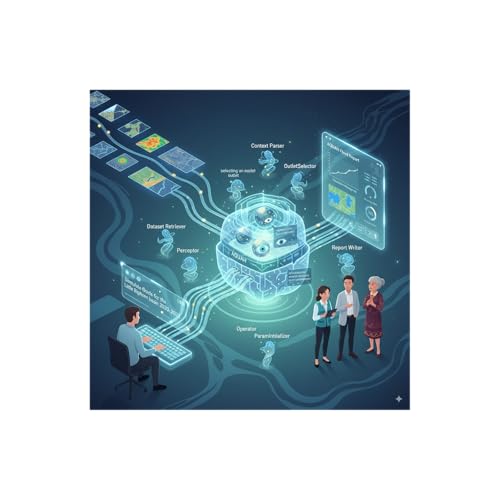Welcome to a new episode where we dive into AQUAH, the Automatic Quantification and Unified Agent in Hydrology! This groundbreaking system is the first end-to-end language-based agent specifically designed for hydrologic modeling.
In this episode, we'll explore how AQUAH tackles the persistent challenges in water resource management, such as fragmented workflows, steep technical requirements, and lengthy model-setup times that often limit access for non-experts and slow down rapid-response applications. Traditional hydrologic tools demand significant manual effort for data download, model configuration, and output interpretation, requiring both domain knowledge and programming skills. AQUAH aims to bridge this gap and enhance communication in hydrologic simulation.
You'll discover how AQUAH transforms a simple natural-language prompt (e.g., “simulate floods for the Little Bighorn basin from 2020 to 2022”) into autonomous, end-to-end hydrologic simulations and narrative reports. It leverages vision-enabled large-language models (LLMs) to interpret maps and rasters on the fly, automating key decisions like outlet selection and parameter initialization that previously required expert human intervention.
This system enables fully automated hydrologic simulations within data-available regions, particularly across the contiguous United States (CONUS). Initial experiments demonstrate that AQUAH can complete cold-start simulations and produce analyst-ready documentation without manual intervention, generating results that hydrologists judge as clear, transparent, and physically plausible.
We'll also touch on the evaluation process, where AQUAH-generated reports were scored by professional hydrologists and LLM co-evaluators on criteria such as Model Completeness, Simulation Results, Reasonableness, and Clarity. While various vision-capable LLMs like GPT-4o, Claude-Sonnet-4, and Gemini-2.5-Flash were benchmarked, Claude-4-opus achieved the highest average score. We'll discuss how these LLMs perform in tasks like gauge selection and parameter initialization, highlighting that while some LLMs like GPT-4o can produce outstanding results, others like Claude-Sonnet-4 offer more consistent performance for first-guess parameterization.
Join us to understand how AQUAH represents a significant leap towards democratizing access to complex environmental modeling, lowering the barrier between Earth-observation data, physics-based tools, and decision-makers, and pointing the way toward fully autonomous hydrologic modeling agents.
 19 分
19 分 16 分
16 分 16 分
16 分 20 分
20 分 10 分
10 分 29 分
29 分 24 分
24 分 2025/04/2423 分
2025/04/2423 分
